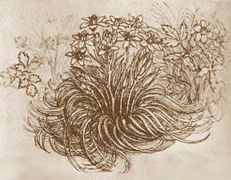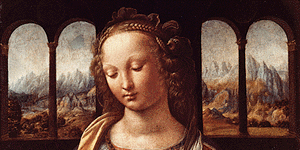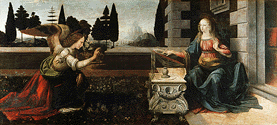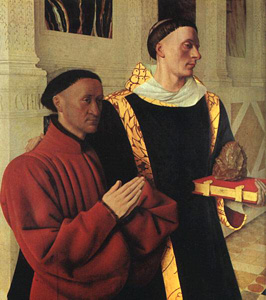




During the Renaissance,
European artists began to study the model of nature more closely and
to paint with the goal of greater realism.
They learned to create lifelike people and animals, and they became
skilled at creating the illusion of depth and distance on flat walls
and canvases by using the techniques of linear
perspective.



Background: Painting in the
Middle Ages.
Leonardo da Vinci trained as a painter during the Renaissance and
became a true master of the craft. His amazing powers of observation
and skill as an illustrator enabled him to notice and recreate the
effects he saw in nature, and added a special liveliness to his
portraits. Curious as well as observant, he constantly tried to
explain what he saw, and described many experiments to test his
ideas. Because he wrote down and sketched so many of his observations
in his notebooks, we know that he was among the very first to take a
scientific approach towards understanding how our world works and how
we see it.
Looking Through Leonardo's
Eyes
Leonardo's Window
Classroom Activity: Using Leonardo's
Window
Exploring Linear
Perspective
Playing Around with Size and
Distance
Classroom Activity: How Far? How
Small?
Investigating Aerial
Perspective
Causes of Aerial
Perspective
